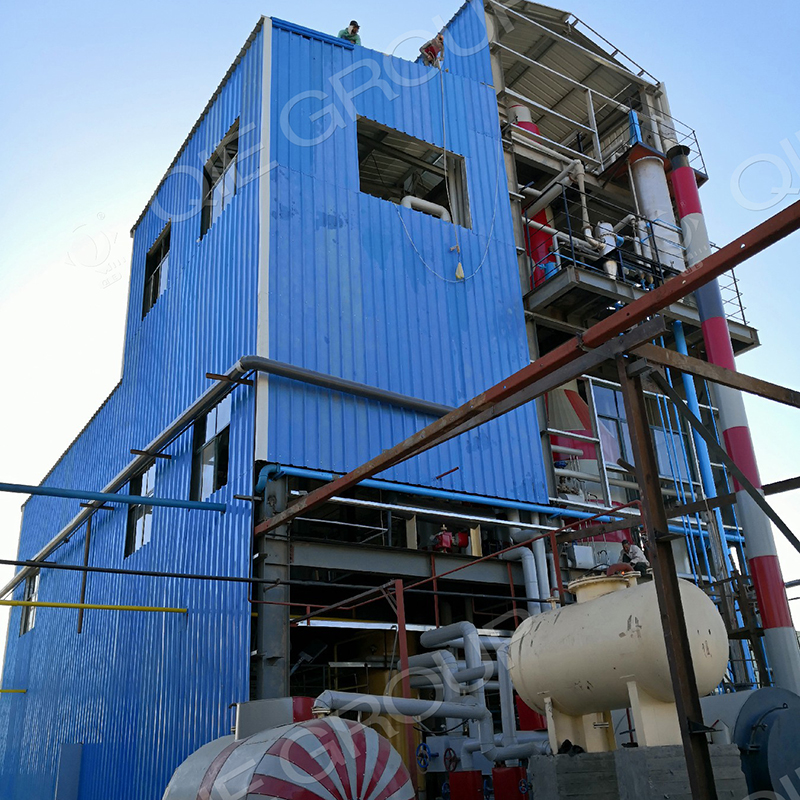
As a decision maker in a small or medium-sized oil mill, understanding the precise technical parameters of your spiral oil press machine is vital for boosting productivity and oil quality. By carefully selecting equipment tailored to your raw materials—be it peanuts, soybeans, or rapeseed—and optimizing key operation parameters such as screw shaft geometry, temperature control, and preheating functions, you can significantly increase oil extraction rates and lower energy consumption.
The core of any spiral oil press machine is its screw shaft; its geometry directly influences material continuous advancement efficiency and overall pressing performance. Optimized pitch spacing and flight thickness ensure uniform compression, enabling steady throughput while minimizing oil losses in the cake.
Industry data confirms that a precision-engineered screw can improve oil yield by approximately 3–5%, a substantial margin given typical extraction rates of 35–45% for common oilseeds. Figure 1 illustrates a sectional view of an advanced screw shaft with variable pitch and reinforced flights designed for enhanced material pressurization.

Maintaining optimal press temperature is critical. Temperatures between 90–110°C generally achieve the best balance between maximizing oil viscosity reduction and preserving the nutritional and sensory qualities of the oil. Advanced temperature control systems monitor and adjust heating dynamically, preventing overheating or underheating.
Case studies demonstrate that precise temperature regulation can enhance oil extraction rates by up to 4% while reducing oxidation-related quality degradation by approximately 15%. For instance, a soybean oil mill employing PID-controlled temperature management observed improved oil color and shelf-life.

Each oilseed presents unique pressing challenges:
| Oilseed | Typical Oil Content | Optimal Temp. Range (°C) | Screw Design Preferences |
|---|---|---|---|
| Peanuts | 45–50% | 95–105 | Medium pitch, high compression flights |
| Soybeans | 18–20% | 90–100 | Coarser pitch, gradual compression flights |
| Rapeseed | 38–44% | 100–110 | Tighter pitch, reinforced flights |
Aligning your machine's technical configuration with the oilseed type enhances pressing efficiency and avoids equipment overstrain or underperformance.
Implementing a robust preheating system raises the moisture and temperature of raw materials before pressing, softening cellular structures and facilitating oil release. Operators report an average 5–7% increase in oil extraction alongside a 10–12% reduction in energy consumption due to smoother pressing operations.
Beyond efficiency, preheating contributes to consistent pressing conditions that stabilize product quality batch-to-batch. Investing in integrated preheaters compatible with your spiral press promotes sustainable operation and long-term savings.
Among frequent missteps is ignoring raw material variability—failing to factor in moisture content or oilseed fibrousness leads to suboptimal equipment sizing and lower yields. Another risk lies in chasing high screw rotations per minute (RPM) without considering thermal and mechanical stresses. Excessive speed can cause overheating and rapid wear, ultimately reducing uptime and increasing maintenance costs.
Expert advice prioritizes balanced operational parameters that harmonize throughput with equipment longevity. Request detailed manufacturer specifications and case references to validate your choice.
Oil mills applying layered optimization—leveraging exact screw shaft redesign, enhanced temperature feedback loops, and preheating—have recorded up to a 12% boost in net oil yield combined with a 15% decrease in energy costs within six months of adjustment.
Regularly cleaning feed channels, scheduling maintenance based on wear patterns, and adopting energy-efficient motors contribute to stable production and cost control.
“Aligning spiral press technical parameters with your specific oilseed profile will transform your mill’s efficiency and profitability. Don’t compromise on precision engineering for short-term savings.” — Dr. Helen Nguyen, Industry Expert

